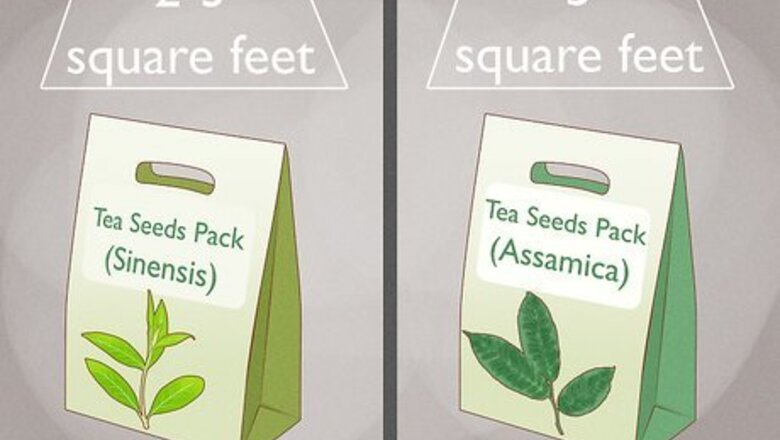
views
Preparing the Seeds

Buy Camellia sinensis seeds for best results. There are two main types of tea plants. Sinensis is recommended because it is hardy and you can make black, green, and white tea from its leaves. You can buy seeds from the local nursery or order them online. You will need about 2 to 3 square feet (1 square meter) of space once the sinensis begins to grow. Assamica is another type of tea plant. It’s not recommended to grow this type of tea plant unless you live in a tropical climate. Also, this is a “large tree” plant, so it requires at least 5 feet (1.5 m) once it begins to grow. You can make the same type of tea from this plant as you would from the sinensis.
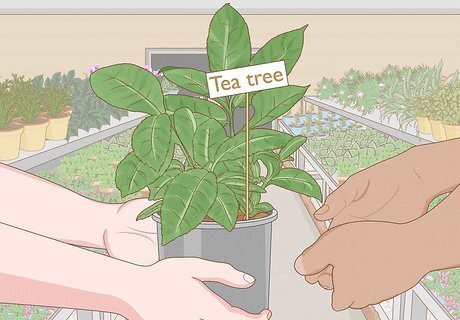
Start with the plant if you want to jumpstart the growing process. It’s also an option to cut the stalk from an existing plant or buy a plant from the nursery. You can choose this option if you don’t want to go through the process of germinating the seeds. If you choose to start with a plant, you will need to nurture it indoors for a year before moving it outside. It is best to begin nurturing it indoors during the spring or fall so that you can move it outside during the spring or fall, which is the best time to plant tea.
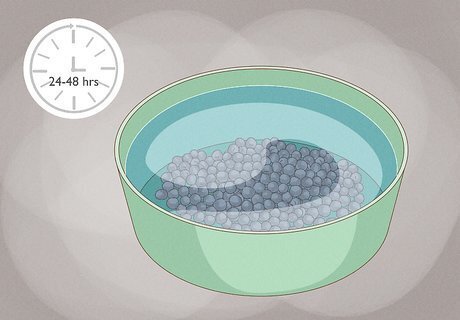
Soak the seeds. Put your seeds into a bowl or container of water. Make sure there is enough water so that the seeds are completely submerged. Let the seeds soak for 24 to 48 hours. Allowing them to soak helps the seeds absorb water, which speeds up the process of germination.
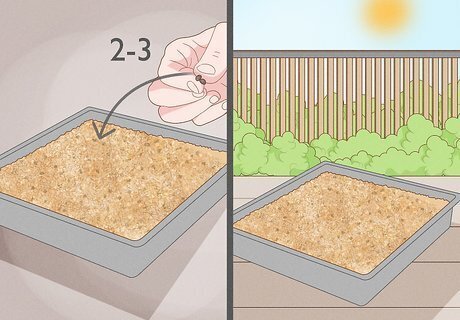
Put the seeds into containers with vermiculite. Take the seeds out of the water, and place 2 to 3 seeds each into separate containers. Place the containers in a warm, sunny location. Spray the seeds to dampen them. Wait a few minutes for the seeds to come back to air temperature. Then, cover the seeds with 1 inch (2.5 cm) of coarse vermiculite—a brown mineral that helps the seeds retain moisture. Let the seeds germinate for 6 to 8 weeks. The number of containers you use depends on how many seeds you have. You can purchase coarse vermiculite at a nursery.
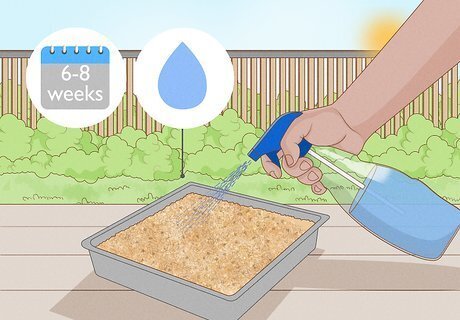
Keep the vermiculite damp. During the 6 to 8 weeks, check the vermiculite daily to see how dry or damp it is. If it’s dry, water the seeds. Do not soak the seeds. The soil should stay damp at all times. It is a best to use a spray bottle to avoid overwatering the plants.
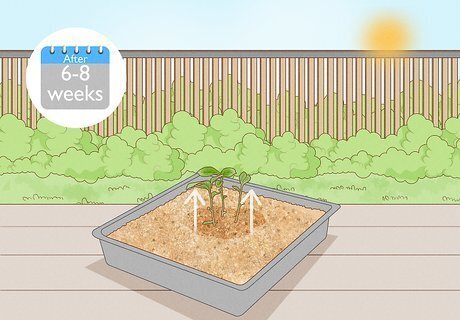
Make sure the seeds have fully germinated. After 6 to 8 weeks, check to see if they have fully germinated. Germinated seeds will have produced small roots and a couple of sprouts. Seeds will often germinate at different rates, so wait until most or all of the seeds have germinated to plant them in pots.
Cultivating the Plant
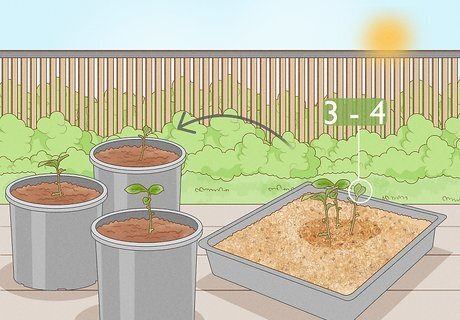
Separate and plant the leaves in pots. The seeds should begin to sprout a few seedlings after 6 to 8 weeks of germination. You should have about 3 or 4 leaves. Put each seedling into a separate pot that has been filled with acidic soil—a pH range of 6 to 6.5 is ideal. Move the pots to a warm and partially shaded place. Spray the soil regularly to keep it moist. You can purchase acidic soil from your local nursery. Test your own to see if it’s acidic, or make it more acidic if it’s not. To test the soil, you can use a strip test. There will be a color-coded key to tell you how acidic the soil is. If the soil isn’t acidic, you can make it more acidic by adding elements such as sulfur and pine needles.
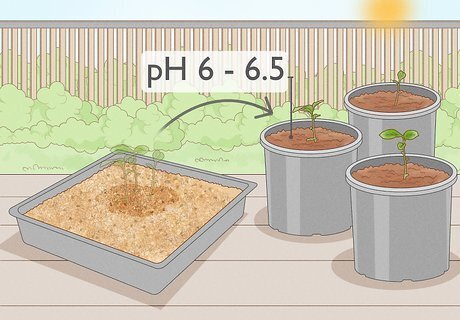
Plant the tea during the spring or fall for best results. Because tea is a perennial plant, it can be planted at any time during the year, as long as the weather isn’t freezing. Tea plants can withstand a light frost, but it does not grow well in very cold climates. It is best, however, to plant the tea during a mild time of year—like spring or fall If you live in a subtropical or tropical climate, the tea can be planted at any time.
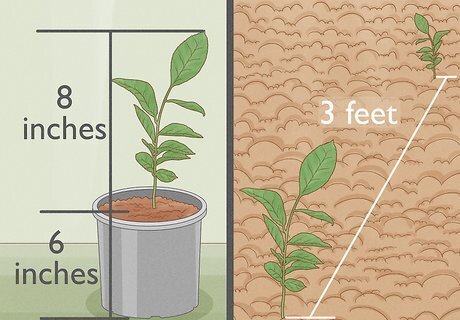
Repot the plant or plant them outside. You will need to move the tea plants once they reach about 8 inches (20 cm) in height. If you put them in new pots, make sure the pots will be big enough for plenty of root growth. A 6-inch (15.24 cm) pot should be large enough. If you plant them outside, plant them at least 3 feet (0.9 m) apart so they have room to grow. The soil should be slightly acidic. If planting outdoors, add sand to the soil to ensure it drains well. If planting indoors, add sphagnum moss to the pot. Plant the tea plant in a partly sunny and partly shady location. This means that the tea plant should get about 6 hours of sunlight daily.
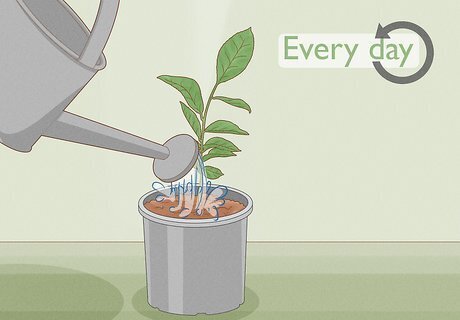
Water the plant every day. Tea plants are hardy and rarely need to be fertilized. They do, however, need to be watered regularly. Water the plants with soft water to maintain the right acidity. The soil should be damp to the touch but not soaked in water. If you see that the plant isn’t thriving, you can “feed” the plant ericaceous food, which is a type of fertilizer that is high in acidity. Spread about 1 inch (2.5 cm) of the fertilizer around the plant.
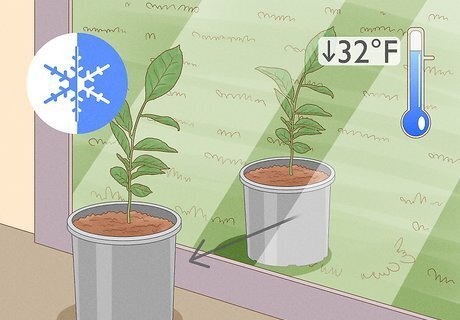
Protect the plant from frost. Tea plants grow best in warm locations, but they can survive the cold and droughts. It is, however, a good idea to move the plants to a warmer location during freezes. Move the plants to a sheltered location or greenhouse during low winter temperatures. Generally, it is a good idea to move the plant if the temperature drops below 32˚F (0˚C). If the plant is outdoors, carefully dig it up, and put it in a pot filled with soil.
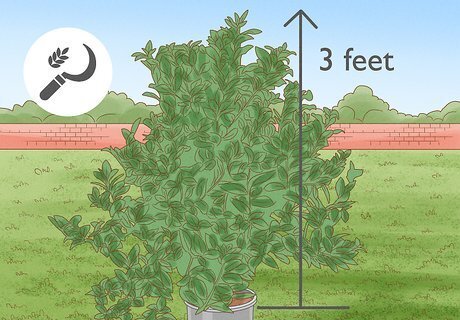
Wait a few years for the plant to mature. It will take about three years before the tea plants reach maturity. This means that you won’t be able to harvest leaves during this time. Once the plant reaches about 3 feet (1 meter), it should be ready for harvest.
Harvesting the Tea Leaves
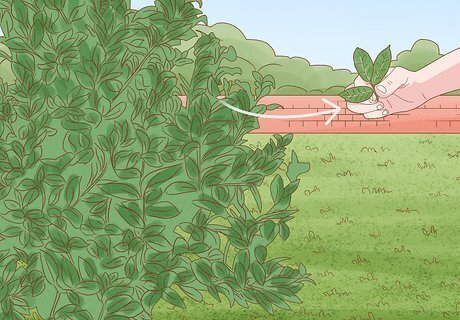
Pick 2 or 3 bright green leaves. Once the plant is about 3 feet (1 meter) high, it will soon be time for harvest. Typically, the leaves will appear during spring or summer. To harvest, use your finger and thumb to gently pluck 3 or 4 bright green leaves off of the plant. These green leaves are ready to be turned into tea.
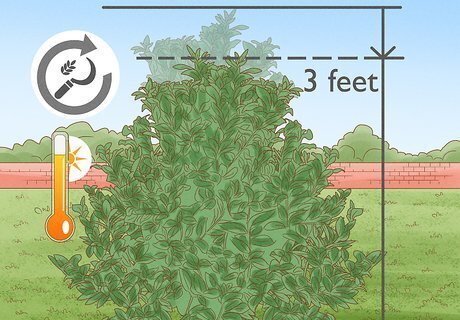
Harvest several times during warmer weather. Tea plants are usually dormant during the winter, but you should be able to harvest several times during the spring and summer. Harvesting anytime you see a few bright green leaves appear will help the plant grow faster. Prune the plant back to 3 feet (1 meter) when you see it start to grow above that height.
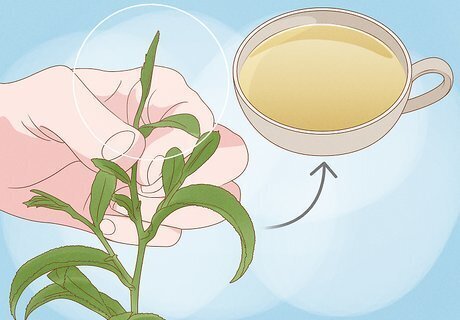
Pick young leaves before they open for white tea. White tea is made from leaves that haven’t fully opened. Preferably, pick the leaves on a warm day. Leave them outside in the sunlight all day long. Then, remove the stems and heat them in a hot, dry skillet for a 2 or 3 minutes. Let the leaves cool down and then store them in an airtight container.

Make green tea. To make green tea, put the bright green leaves out in a shady location for a few hours. Then, you can either put them in a rice cooker or roast them in a hot, dry skillet for a few minutes. After that, bake the leaves for 20 minutes at a temperature of 250°F (121° C). Allow the leaves to cool and store them in an airtight container if you don’t want to brew them immediately. Leaves kept dry in an airtight container can last for several years. Preferably, use the tea within a year. Using a rice cooker will leave the green tea with an earthier taste. To make green tea in a rice cooker, first put water-absorbent paper into the cooker. Then, turn the setting to a heat-preserving mode. Add a shallow layer of leaves. Do not cover the cooker all of the way. Leave the leaves for 3 to 4 hours.

Produce black tea. Roll the freshly picked leaves between your fingers until they turn dark. Then, spread the leaves out on a flat surface and leave them in a cool location for 2 or 3 days. Brew the leaves immediately or store them in an airtight container. The leaves will last for years if they are tightly sealed in the container. Alternatively, dry the leaves by baking them for 20 minutes in an oven preheated to 250 °F (121 °C).

Turn your leaves into oolong tea. Allow the fresh leaves to sit in the sun for 30 minutes to an hour. After that, bring the leaves inside and allow them to sit for up to 10 hours, mixing them every hour. Dry the leaves in the oven at 250°F (121°C) for 10 to 12 minutes. Then, brew them or store them in an airtight container. Make sure that the container is completely sealed. Your leaves can last for years if they are kept dry.
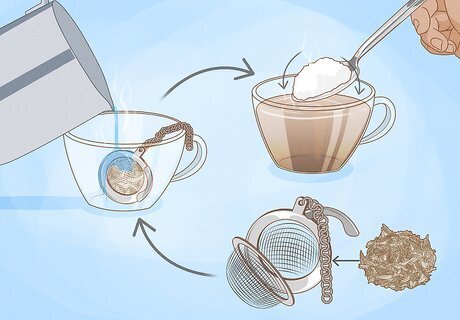
Make your tea. Put several leaves inside of a tea bag or tea infuser. Place the bag into boiling water. Allow the tea to steep for at least 3 minutes and remove the bag. To sweeten, add sugar, honey, or artificial sweetener. Then, enjoy your tea. You can also infuse your tea with herbs, such as lavender, for a floral taste. Use a very small amount in comparison to the amount of tea leaves you use for tea, unless you want a very strong herbal taste.



















Comments
0 comment